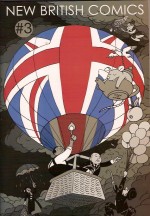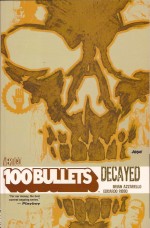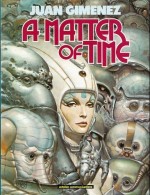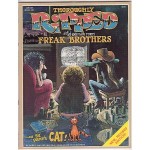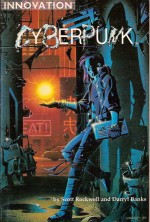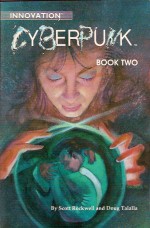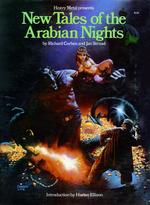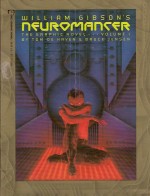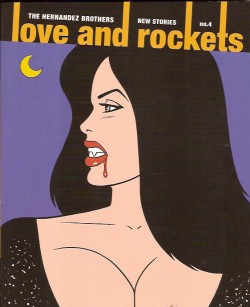
By Donna Barr (Mu Press/Aeon Pubs)
ISBN: 1-883847-05-2
Donna Barr is one of the comic world’s most singular graphic raconteurs. She always constructs impeccable, fully realised worldscapes to house her stories and tells them with a style and voice that are definitely one-of-a-kind. Her most perfect creations are the Half-Horse Stinz Löwhard, and The Desert Peach, perfectly self-assured and eminently capable gay brother of the legendary “Desert Fox†and the scintillating star of this effervescent assemblage of sly, dry wit, raucous drollery and way out military madness.
Set in World War II Africa and effortlessly combining hilarity, absurdity, profound sensitivity and glittering spontaneity, the stories describe the daily grind of Oberst Manfred Pfirsich Marie Rommel; a dutiful if unwilling cog in the German War Machine.
However, although as capable as his beloved elder sibling Field Marshal Erwin Rommel, the gracious and genteel Peach is a man who loathes causing harm or giving offence and thus spends his dry and dusty days with the ever-so-motley crew of the 469th Halftrack, Gravedigging & Support Unit of the Afrika Korps, trying to remain stylish, elegant and non-threatening to the men under his command and the enemy forces around him.
The only people he really dislikes are boors, bigots and card-carrying Blackshirts…
He applies the same genteel courtesies to the sundry natives inhabiting the area and the rather tiresome British – not all of whom are party to a clandestine non-aggression pact Pfirsich has agreed with his opposite numbers in the amassed Allied Forces…
The romantic fool is also passionately in love with and engaged to Rosen Kavalier: handsome Aryan warrior and wildly manly Luftwaffe Ace…
The Desert Peach ran for 32 intermittent issues via a number of publishers and was subsequently collected as eight graphic novel collections (1988-2005). A prose novel, Bread and Swans, a musical and an invitational collection by other artists entitled Ersatz Peach were also created during the strip’s heyday. A larger compendium, Seven Peaches, collects issues #1-7 and Pfirsich’s further exploits continue as part of the Modern Tales webcomics collective…
Arguably the real star of these fabulous frothy epics is the Peach’s long-suffering, unkempt, crafty, ill-mannered, bilious and lazily scrofulous orderly Udo Schmidt, a man of many secrets whose one redeeming virtue is his uncompromising loyalty and devotion to the only decent man and tolerable officer in the entire German army.
This terrifyingly scarce fourth softcover collection reprints issues #10-12, and starts the ball rolling with ‘Two-Timers’ wherein the fiercely protective Pfirsich infiltrates the British positions as history’s least believable English Officer to ferret out a spy targeting his brother Erwin.
Of course to carry off the mission somebody has to be prominently visible in the German camp as the ever-so-unmissable and wickedly froufrou Desert Peach. Ein step vorwarts, (or else…) patriotic he-man and self-appointed Nazi political officer Leutnant Kjars Winzig…
Meanwhile, as the entire 469th kvetch over the Leutnant’s unlikely and unhappy performance, Pfirsich’s impossible imposture is going inconceivably well until he confronts the undercover agent over drinks in the NAAFI. Although the bold Boche succeeds in reasoning with the master-spy, a couple of Anzac non-coms (who hate Poms as much as Krauts) are not fooled, leading to a spectacular chase and frantically thrilling conclusion…
That hilarious comedy of terrors was quickly topped by a superbly delightful and trenchantly wicked adult farce in ‘Straight and Narrow’ wherein Udo, disgusted with the mockery his effeminate boss engenders amongst other German units, determines to get his boss laid by a woman – specifically the very willing and professional ladies of local bordello “The Cedarsâ€.
Aiding and abetting this appalling scheme is Pfirsich’s one true love, wild man Luftwaffe pilot and airborne inamorata Rosen Kavalier. Even with the more than willing demimondaine Babette in on the scheme and exerting all her professional wiles it takes a chemical “additive†to finally get the ball rolling…
Of course the entire vile scheme ends badly and the Peach, crushed, disgusted and humiliated storms off. Soon after however, Babette realises that she’s now eating for two…
The reprinted material ends here with the inevitable conclusion in ‘Menschenkind – Child of the World’ as nine months after that epic night Pfirsich – still distant with his staff and boyfriend – drives away the unrepentant Ace. Kavalier storms off and visits The Cedars again, discovering a fascinating piece of news…
Although the Peach refuses to listen to his true love, cunning Udo, in on the secret, inveigles his boss into returning to his place of shame, where after another farcical misapprehension of events the Peach is finally introduced to his newborn son…
But of course even this joy is tempered by incredible problems…
To augment and complete this fabulous triptych of torrid tales there’s a new epilogue ‘Home is Where…’ set in the Peach’s declining years, wherein Pfirsich and his adult son Mani play host to a reunion of the 469th few survivors: a bittersweet vignette which delights and fearfully foreshadows tragedies yet to come…
Referencing the same vast story potential as Sgt. Bilko, Hogan’s Heroes, Oh, What a Lovely War! and Catch 22, as well as such tangential films as Priscilla, Queen of the Desert and The Birdcage, the Desert Peach is bawdy, raucous, clever, authentically madcap and immensely engaging. These fabulous combat fruit cocktails were some of the very best comics of the 1990s and still pack the comedic kick of an embroidered landmine, liberally leavened with situational jocularity, accent humour and lots of footnoted Deutsche cuss-words for the kids to learn. Moreover, with this volume the dark bitter edges and cold iron underlying these fabulous characters and their horrific, doomed situation become increasingly apparent.
Illustrated in Barr’s fluidly seductive wood-cut and loose-line style, this book is a must-have for any history-loving, war-hating lover of wit, slapstick, high drama and belly-laughs. All the Desert Peach books are pretty hard to find these days but if you have a Kindle, Robot Comics have just begun to release individual comicbook issues for anybody who can get the hang of all this verfluchte technical tsuris…
© 1991-1994 Donna Barr. All rights reserved. The Desert Peach is ™ Donna Barr.
